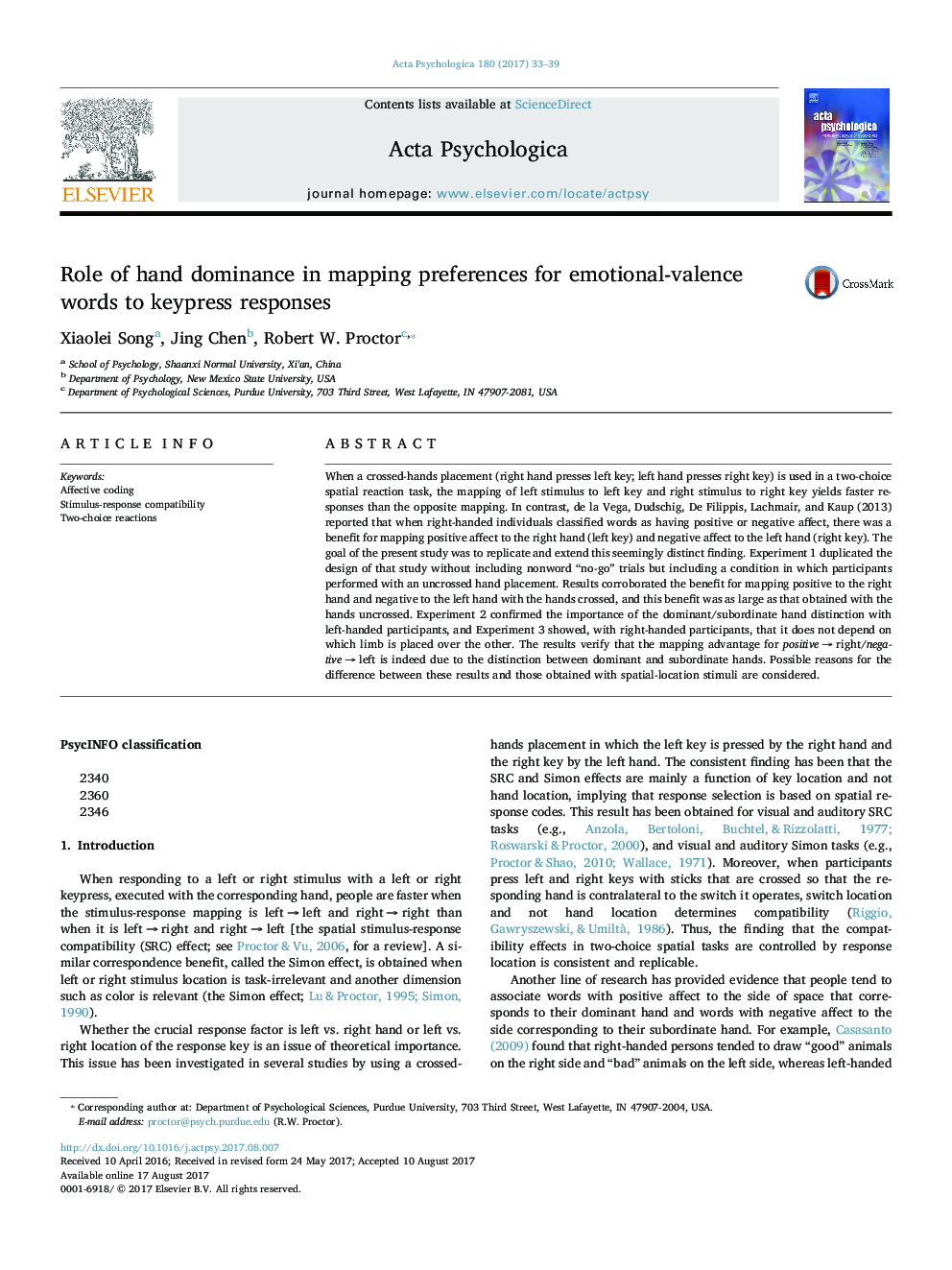| کد مقاله | کد نشریه | سال انتشار | مقاله انگلیسی | نسخه تمام متن |
|---|---|---|---|---|
| 5040180 | 1473578 | 2017 | 7 صفحه PDF | دانلود رایگان |
- We examine mappings of positive and negative words to left and right keypresses.
- Performance was best with positive â dominant hand and negative â nondominant hand.
- This result was also evident with the response hands crossed.
- This mapping effect is due to the hand distinction and not key locations.
When a crossed-hands placement (right hand presses left key; left hand presses right key) is used in a two-choice spatial reaction task, the mapping of left stimulus to left key and right stimulus to right key yields faster responses than the opposite mapping. In contrast, de la Vega, Dudschig, De Filippis, Lachmair, and Kaup (2013) reported that when right-handed individuals classified words as having positive or negative affect, there was a benefit for mapping positive affect to the right hand (left key) and negative affect to the left hand (right key). The goal of the present study was to replicate and extend this seemingly distinct finding. Experiment 1 duplicated the design of that study without including nonword “no-go” trials but including a condition in which participants performed with an uncrossed hand placement. Results corroborated the benefit for mapping positive to the right hand and negative to the left hand with the hands crossed, and this benefit was as large as that obtained with the hands uncrossed. Experiment 2 confirmed the importance of the dominant/subordinate hand distinction with left-handed participants, and Experiment 3 showed, with right-handed participants, that it does not depend on which limb is placed over the other. The results verify that the mapping advantage for positive â right/negative â left is indeed due to the distinction between dominant and subordinate hands. Possible reasons for the difference between these results and those obtained with spatial-location stimuli are considered.
Journal: Acta Psychologica - Volume 180, October 2017, Pages 33-39
